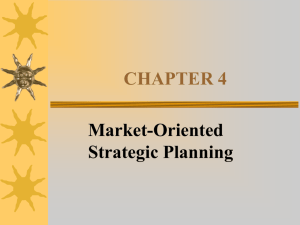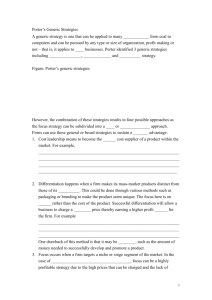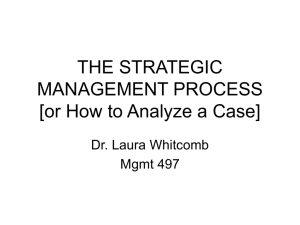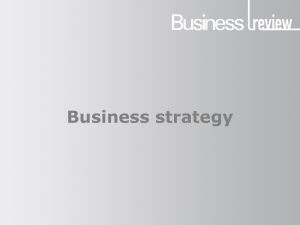Document 14581668
advertisement
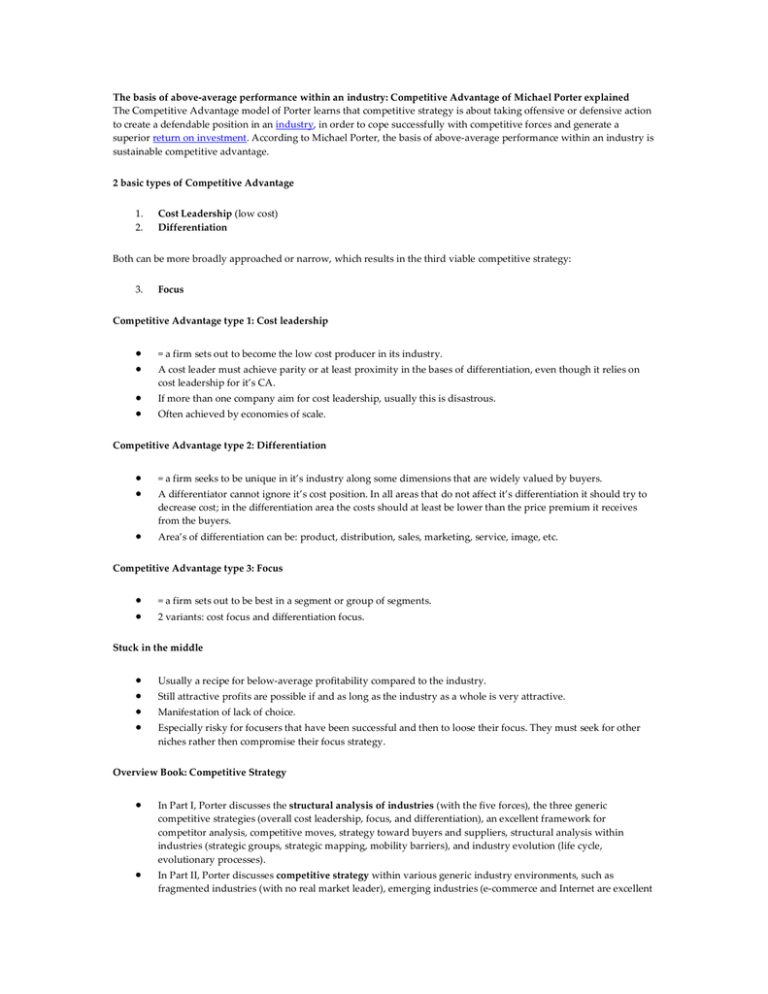
The basis of above-average performance within an industry: Competitive Advantage of Michael Porter explained The Competitive Advantage model of Porter learns that competitive strategy is about taking offensive or defensive action to create a defendable position in an industry, in order to cope successfully with competitive forces and generate a superior return on investment. According to Michael Porter, the basis of above-average performance within an industry is sustainable competitive advantage. 2 basic types of Competitive Advantage 1. 2. Cost Leadership (low cost) Differentiation Both can be more broadly approached or narrow, which results in the third viable competitive strategy: 3. Focus Competitive Advantage type 1: Cost leadership • • = a firm sets out to become the low cost producer in its industry. • • If more than one company aim for cost leadership, usually this is disastrous. A cost leader must achieve parity or at least proximity in the bases of differentiation, even though it relies on cost leadership for it’s CA. Often achieved by economies of scale. Competitive Advantage type 2: Differentiation • • = a firm seeks to be unique in it’s industry along some dimensions that are widely valued by buyers. • Area’s of differentiation can be: product, distribution, sales, marketing, service, image, etc. A differentiator cannot ignore it’s cost position. In all areas that do not affect it’s differentiation it should try to decrease cost; in the differentiation area the costs should at least be lower than the price premium it receives from the buyers. Competitive Advantage type 3: Focus • • = a firm sets out to be best in a segment or group of segments. 2 variants: cost focus and differentiation focus. Stuck in the middle • • • • Usually a recipe for below-average profitability compared to the industry. Still attractive profits are possible if and as long as the industry as a whole is very attractive. Manifestation of lack of choice. Especially risky for focusers that have been successful and then to loose their focus. They must seek for other niches rather then compromise their focus strategy. Overview Book: Competitive Strategy • • In Part I, Porter discusses the structural analysis of industries (with the five forces), the three generic competitive strategies (overall cost leadership, focus, and differentiation), an excellent framework for competitor analysis, competitive moves, strategy toward buyers and suppliers, structural analysis within industries (strategic groups, strategic mapping, mobility barriers), and industry evolution (life cycle, evolutionary processes). In Part II, Porter discusses competitive strategy within various generic industry environments, such as fragmented industries (with no real market leader), emerging industries (e-commerce and Internet are excellent • examples, although not mentioned in this book as it was written in 1980), mature industries, declining industries, and global industries. In Part III, Porter discusses strategic decisions which businesses/firms can take, such as vertical integration (forward, backward, partnerships), capacity expansion, and entry into new industries/businesses.
